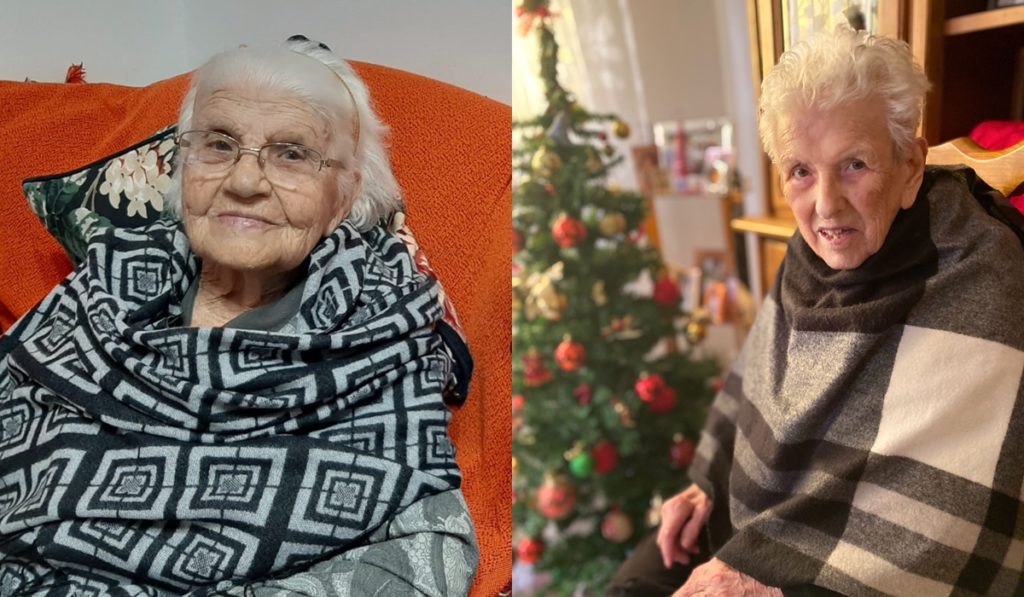
Candelaria Delgado Gaspar, 93 years old, remembers Christmas in San Isidro (Granadilla de Abona) with longing. “At home they sang and danced, the celebrations were with the family and they ate much healthier: pig meat, baifo, rabbit, chicken broth, potatoes, cheese, donuts …”, he recalls. Nor does he forget that “there was no shortage of someone to play a guitar” or the old custom of going out to the houses and going to mass in the village hermitage.
Of humble family origin – she is the youngest of seven siblings – in her mind she preserves pictures of a San Isidro very different from the current one, crossed by numerous culverts, without paved streets and hardly any vehicles. “Before it was a calmer life and without the stress of now,” he emphasizes, and says that then electricity did not reach the town. “At Christmas we did not have, as now, lights in the streets, not even candles in the houses, the only light in the home was the lanterns that were lit with oil.”
When the end of the year came, the celebrations were limited to singing and dancing, but on New Year’s Eve the lucky grapes were not consumed. “And the Kings were not like those of now, because there was nothing to buy with and one was satisfied with what they gave,” he details.
At that time, life in the south of Tenerife was not easy. Candelaria remembers the long walks to the urban area of Granadilla to buy groceries that would complement what the garden gave, whether it was the vegetables they planted or the contribution of animals, from cows, goats, rabbits and chickens to camels.
Candelaria, who has a daughter, three grandchildren and three great-great-grandchildren, has always won the affection of her neighbors. Married to José Alonso, now deceased, she was the owner of a wood oven, where she made donuts, cookies, milk cakes and sponge cakes. The whole town passed through his bakery to buy and bake meat and bread cakes.
Petra García Cuesta, 94, is another of the privileged memories of the South. Raised in a family of seven siblings in Valle San Lorenzo (Arona), she admits that in her younger years she received “private” Christmas Eve, since “she ate something special: they killed baifos, rabbits and chickens, because pigs They had already killed each other in November, by San Martín. And there was frangollo for dessert! “
The image comes to mind of his mother, Isabel, and his aunt Lola kneading bread for Christmas Eve and making wine bagels. “They took advantage of the wood from the oven that some neighbor lit”. In the town they agreed and told each other door to door: “Do you toast today, Isabel?” They asked at home. Plan B was the home of Signo María, the baker. “Those who did not make bread could buy it there, if they could afford it, of course.” Those special days also increased the production of millet in the millstones “to make more gofio and frangollo”.
“At home there was never a lack of food and on the appointed dates someone from outside used to arrive, because there were always people poorer than one,” says one of the best-known neighbors in the Valley, who summarizes the economic situation of the time. in a sentence: “The rich of before were poorer than the poor of now”, to add that “teachers could have something more, but it was very little.” Petra, who was a seamstress, took out at that time, like many families, embroidered tablecloths and napkins. It was his way of enacting the extraordinary nature of family gatherings like Christmas Eve.
After recalling the Christmas carols sung by the neighbors in the El Pinito area, he points out that at Christmas there was no work at the smithy, “but if someone came from afar with a beast, they would be attended to.” Her husband, Juan Díaz Hernández, and her brother José, whom they called El Rubio, worked with “grandfather Pepe” in the del Valle smithy, well known throughout the southern region.
When asked about the Three Wise Men from before, he says that “letters were not written like now, but we expected some private gifts,” he insists. “To console the children there was always an orange, an apple or another fruit, and if someone wanted to make a show they would leave donkey dung” (laughs). “Before there was nothing else. Or I don’t remember anything else ”.
But when he thinks of the gifts that he remembers most fondly, his prodigious memory rescues “the sack and cloth dolls that looked like people and that were made by Antonia la Vieja and Rosita, who were sisters, because there were no doll sales here or anything like that. ; everything was made in the houses, and the fabrics, buttons and zippers were bought in Granadilla and in Las Tres Muñecas, in Santa Cruz ”.
Petra, like Candelaria, are two examples of the hard life in that South of the mid-twentieth century plagued with deficiencies and difficulties. Two women fighters with a special charisma that today will sit at the family table again. Another Christmas Eve awaits you.
















